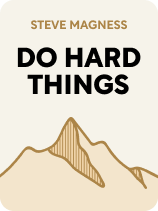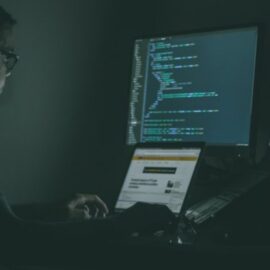

This article is an excerpt from the Shortform book guide to "Do Hard Things" by Steve Magness. Shortform has the world's best summaries and analyses of books you should be reading.
Like this article? Sign up for a free trial here.
Do you have trouble coping in uncomfortable situations? How can you be flexible in life to shift your mindset?
Having a positive mindset requires learning to “zoom in and out” every once in a while. This means broadening or narrowing your focus depending on the situation at hand.
Here’s how to be flexible in life by adjusting your focus to what’s important.
Zoom In or Zoom Out
In Do Hard Things, Steve Magness states that true toughness is about learning to deal with pain or discomfort, whether it be mental, physical, or emotional. This means learning to be flexible in life—broadening or narrowing your focus depending on the situation. Magness claims that the toughest people—those who can thrive in the face of adversity—know when to shift between a broad and narrow state of mind. On the other hand, the only strategy of old-school toughness is to fight against pain and push through. This approach focuses your attention only on the specific task you’re currently working on.
| What a Samurai Warrior Says About Toughness In The Book of Five Rings, 16th-century Samurai warrior Miyamoto Musashi provides advice on individual combat that echoes Magness’s advice on dealing with life challenges. Musashi argues that maintaining awareness and adaptability is key to successful combat. For instance, he says that knowing your environment (the terrain, enemy positioning, climate) is crucial in maintaining control in a situation. Similarly, Magness claims that understanding your inner and outer environment (reality, your emotions, and your thoughts) is necessary to navigate adversity. Musashi also claims that you need to adapt your strategy depending on the circumstances. This resembles Magness’s argument that old-school toughness doesn’t work because its only strategy is to keep fighting through the pain without exploring other options. Just as a Samurai warrior needs to shift focus and change strategies to succeed in combat, a truly tough person needs to recognize when something isn’t working and shift focus accordingly to overcome adversity. |
Sometimes, Magness points out, narrowing your focus is the best strategy. In times of stress, this is advantageous because it allows you to focus intensely on the task you need to accomplish. But, as we’ve discussed, most people can only do this for so long before their negative thoughts spiral and they give up, panic, or make poor decisions. When narrowing your focus is your only strategy, it limits your options—when your attempt doesn’t work the first time, your only option is to try again. You need to be able to try something different instead of doubling down and wasting your effort.
(Shortform note: In Smarter Faster Better, Charles Duhigg provides a term for this type of over-focusing: cognitive tunneling. He defines cognitive tunneling as a process in which the brain becomes fixated on one stimulus at the expense of everything else. Magness claims that narrowing your focus for too long can lead you to give up. Duhigg, on the other hand, claims that the main harm of cognitive tunneling is when the main object of your focus isn’t the right one. In other words, when we hyperfocus on one task or stimulus, it’s often not the thing we should be focusing on.)
When narrowing your focus fails, when you feel on the verge of giving up or panicking, you must be able to zoom out and take on a new perspective. This approach allows you to take in more information, be more creative, and avoid the pitfalls of narrowing your attention. For instance, if you’re freaking out about an upcoming presentation, it may be better to zoom out and think about how unimportant your presentation is in the grand scheme of things rather than fixate on the presentation or your anxiety. The key, however, according to Magness, is learning when to broaden and narrow and being able to shift your focus and attention at will.
(Shortform note: Another way zooming out may be helpful is in avoiding the illusion of attention, which Rolf Dobelli describes in The Art of Thinking Clearly. The illusion of attention is the human tendency to focus only on the details you feel are important. When focusing, your brain naturally ignores information it deems unnecessary or irrelevant. While this can help you ignore distractions, it can also cause you to miss important information. By zooming out occasionally, you can avoid missing important information your brain chose to ignore.)
Let’s say you’re an ambulance driver trying to get a patient to the hospital as fast as you can. When everything is going according to plan, you can zoom in and focus on driving your chosen route as quickly and safely as possible. But if you hit an unexpected traffic jam, you need to zoom out, take in your surroundings, and come up with a new plan. Perhaps you realize you can cut through a parking lot, backtrack a few hundred meters, and take a side road that will get you to your destination quicker.
To improve your focusing abilities, Magness suggests the following exercises:
Narrow and broaden your thoughts: Think of a hypothetical problem—for example, say there’s too much vehicle traffic in your neighborhood, and you want to improve this. Now, think of the most obvious solution to this problem, and make a detailed plan on how you would implement it. Then, zoom out, and instead of coming up with one detailed plan, come up with as many solutions to the problem as you can think of, no matter how ridiculous or impractical they seem. This exercise is meant to improve your ability to solve problems in different ways—first by narrowing your attention and improving concentration, then by broadening it and improving creativity.
(Shortform note: In Learning How to Learn, Barbara Oakley and Terrence Sejnowski identify two modes of thinking that correspond with Magness’s narrow and broad thinking. They call them focused thinking and diffuse thinking. In focused thinking mode, brain activity is concentrated in a specific neuronal network, which allows you to pick up on small details. In diffuse thinking mode, brain activity is spread out, which can help you see things differently. The authors argue that alternating between these two modes of thinking can improve problem-solving—first by identifying the problem with focused thinking, then by coming up with a solution with diffuse thinking.)
Zoom in and out visually: This exercise is meant to help you shift between a narrow and broad state of mind using visual cues. Direct your attention to a single object. Zoom in on this object, noticing as many details about it as you can. Then, zoom out, unfocusing your vision so that it’s blurry. Try to not focus on the details of any single object, but instead notice everything around you. You can also use this exercise in times of stress—if you feel yourself becoming overwhelmed by a situation, try to zoom out and broaden your vision to keep your negative thoughts from spiraling.
(Shortform note: Psychologists confirm that where you focus your visual attention has an effect on your mental and emotional states. Psychologist Rick Hanson argues that the brain has two main ways of processing information: the allocentric mode and the egocentric mode. The egocentric mode lets you see things subjectively, up close, and as disparate parts. The allocentric mode gives a more objective view, allowing you to see things as connected and part of a bigger picture. Hanson claims that simply focusing your vision on the horizon can activate allocentric processing in the brain.)

———End of Preview———
Like what you just read? Read the rest of the world's best book summary and analysis of Steve Magness's "Do Hard Things" at Shortform.
Here's what you'll find in our full Do Hard Things summary:
- Why the "old-school" way we think about toughness is wrong
- Why machismo ideals are harmful and ineffective
- How to become resilient and versatile, and how to overcome adversity






